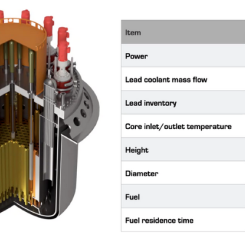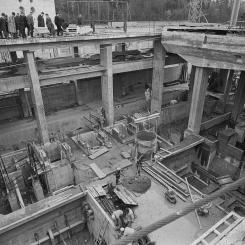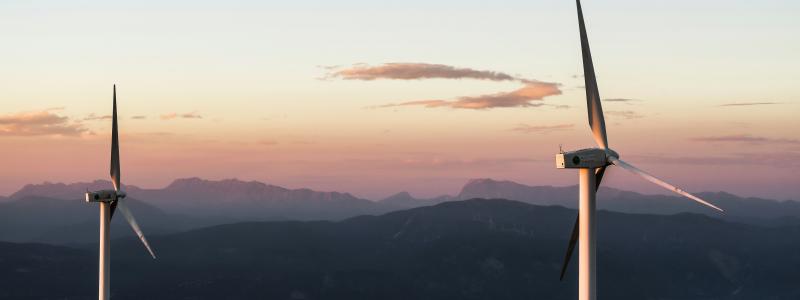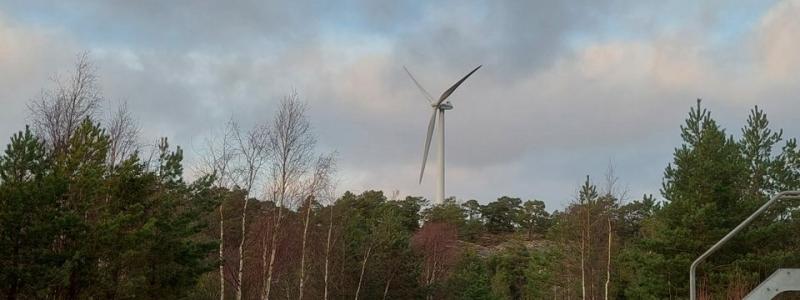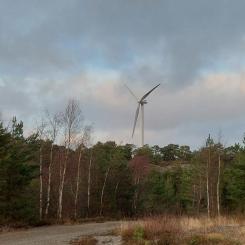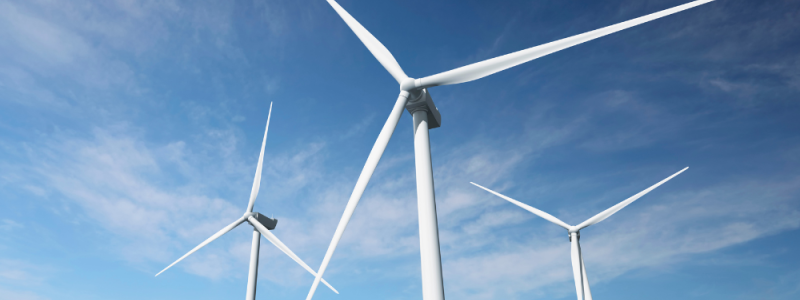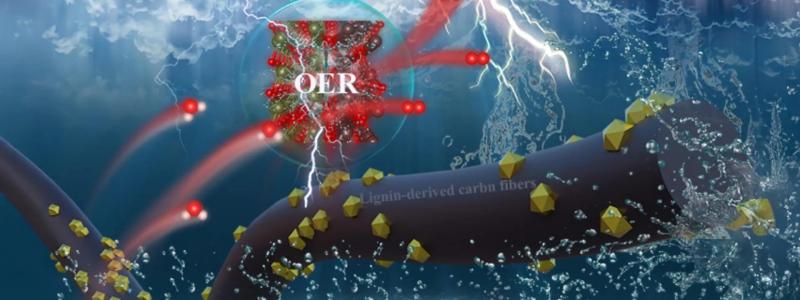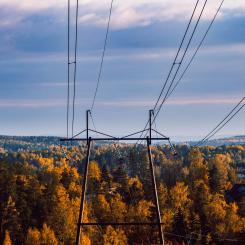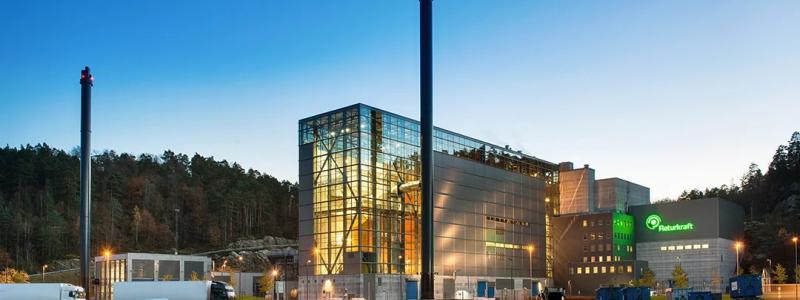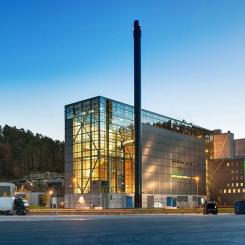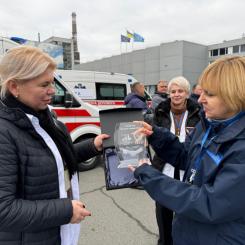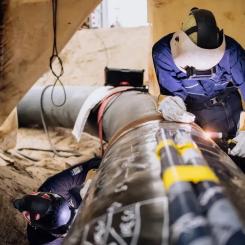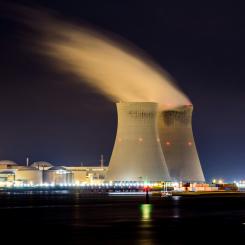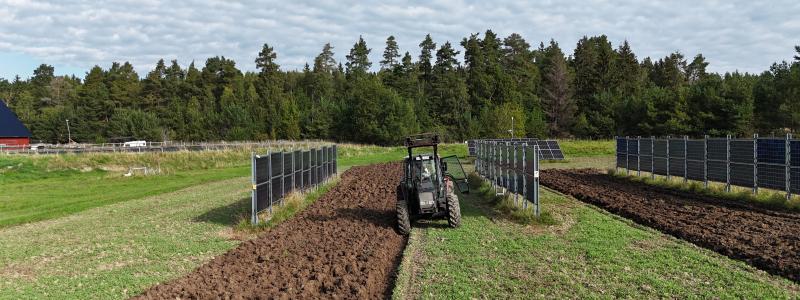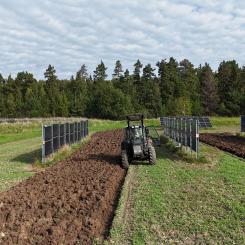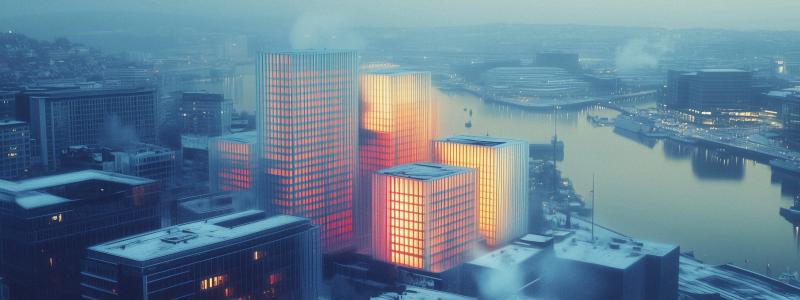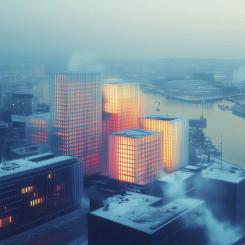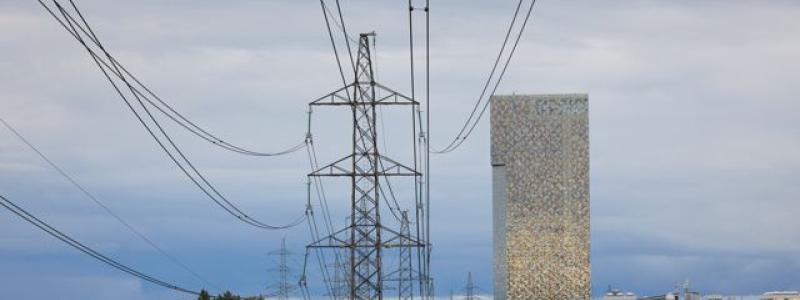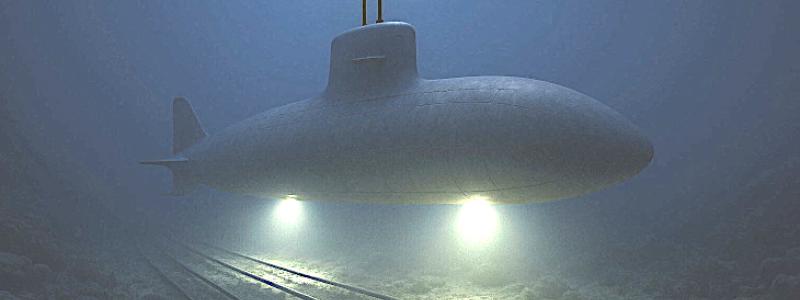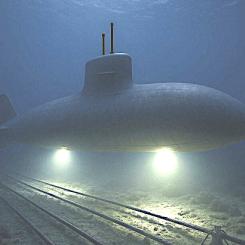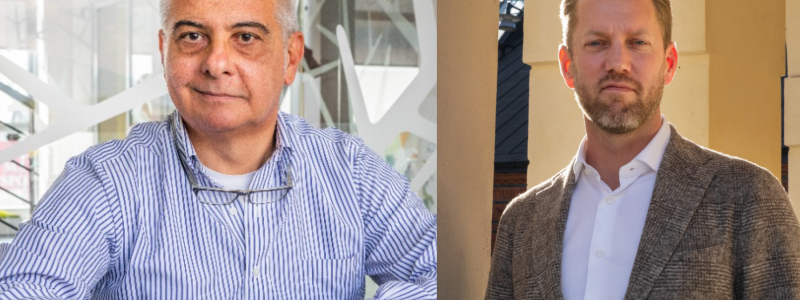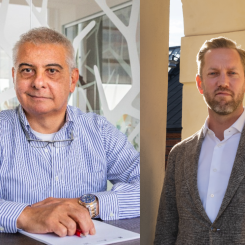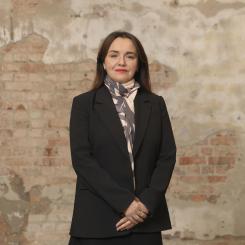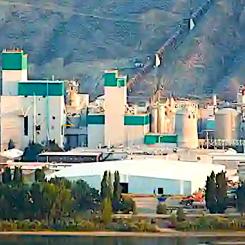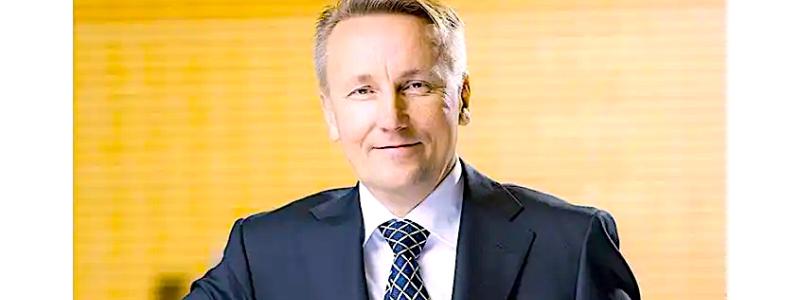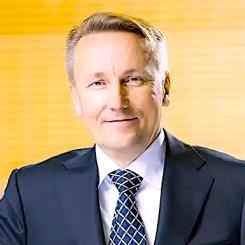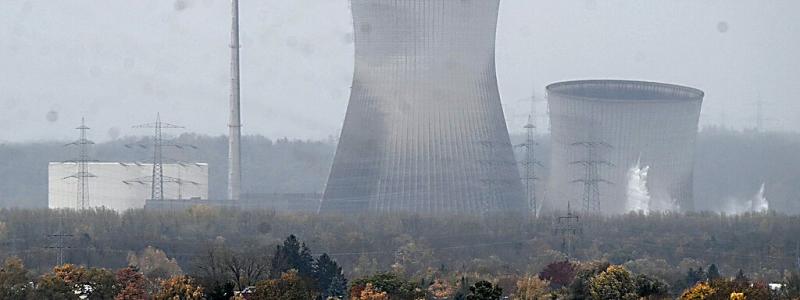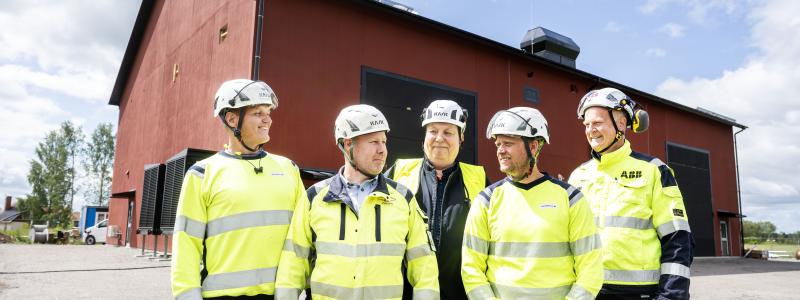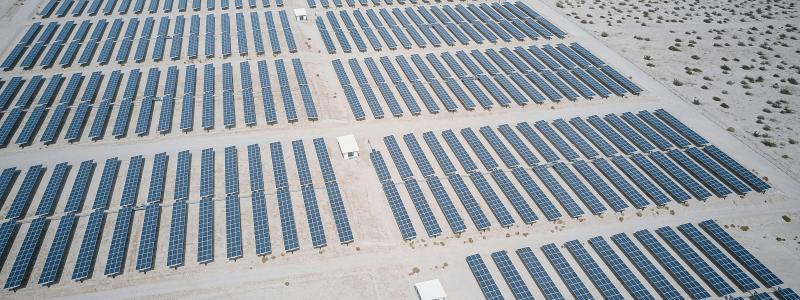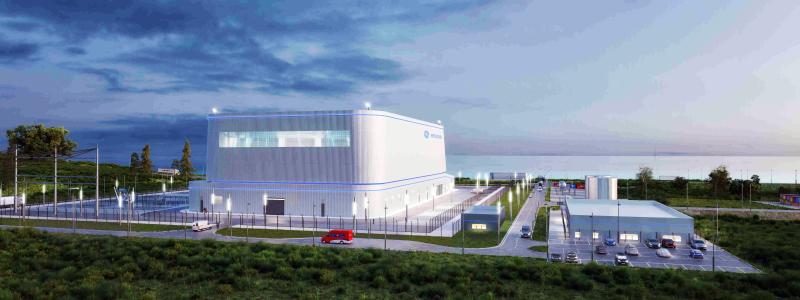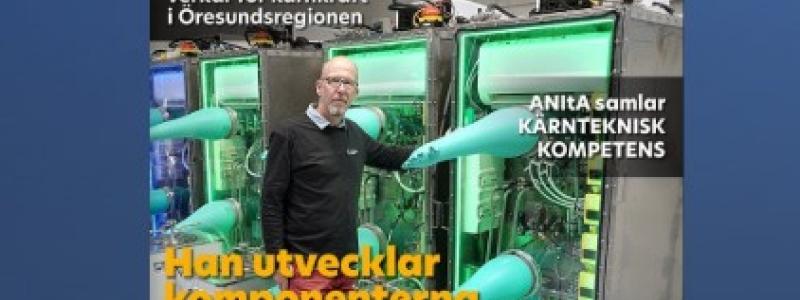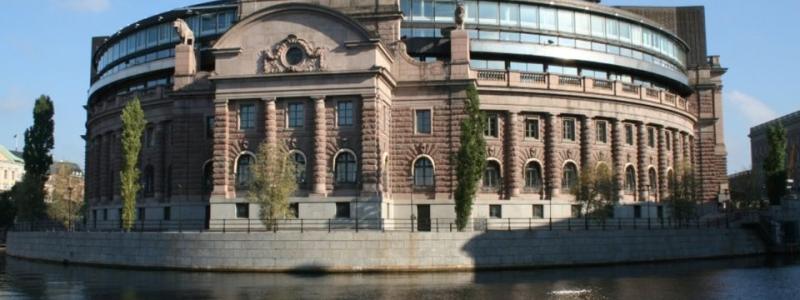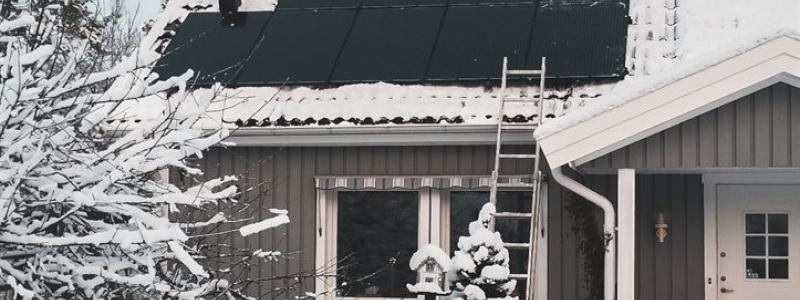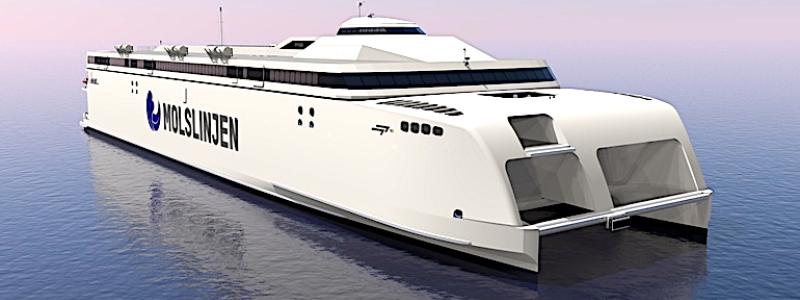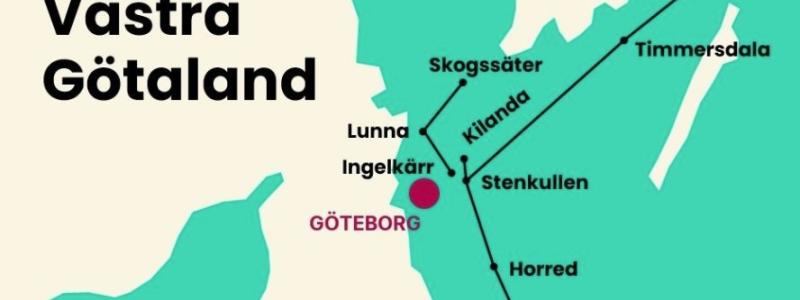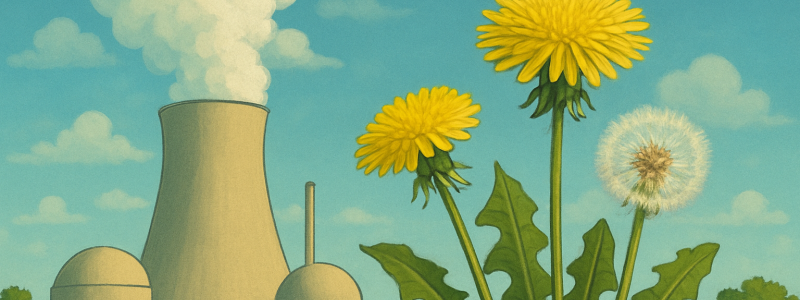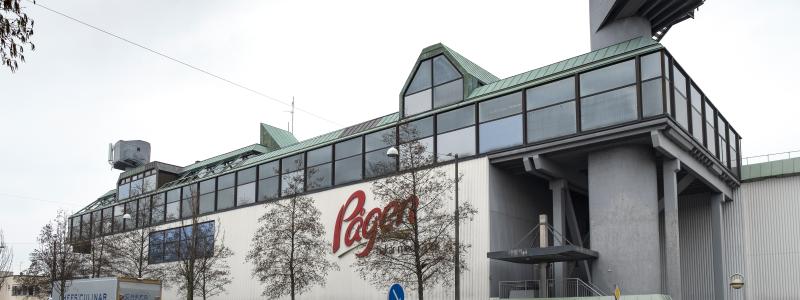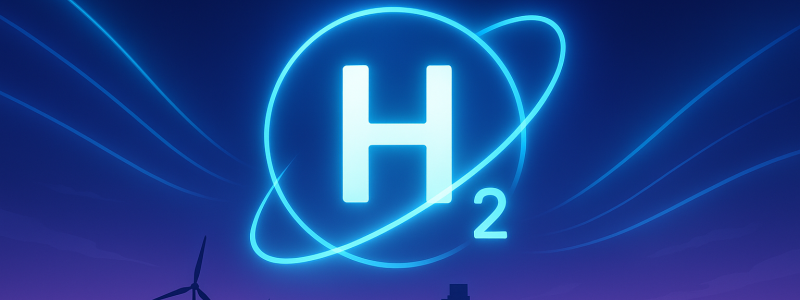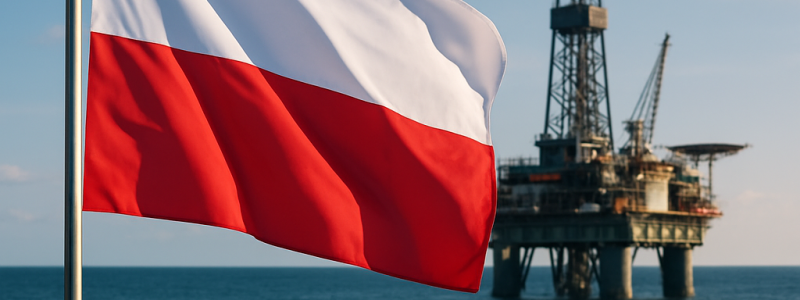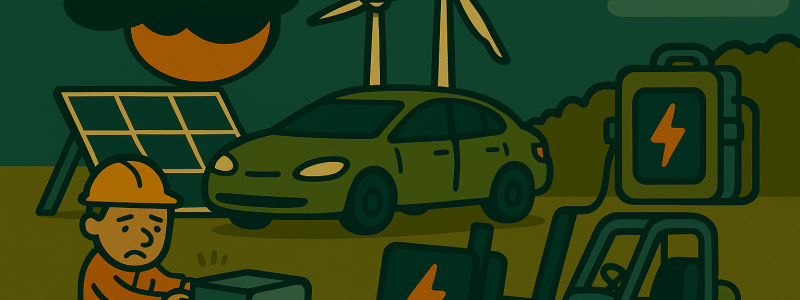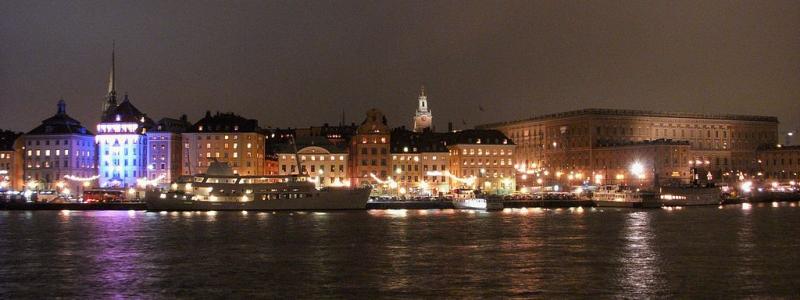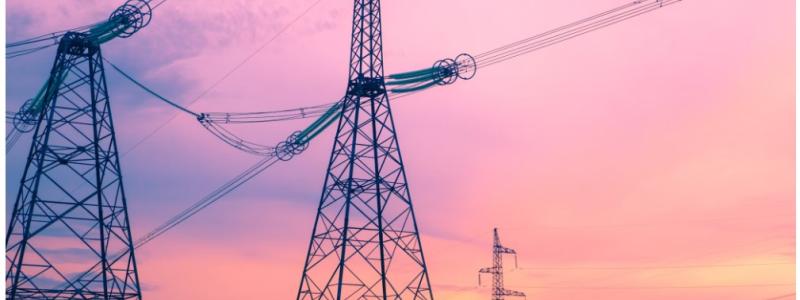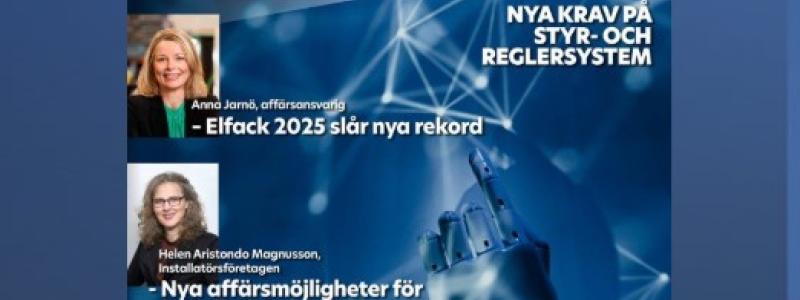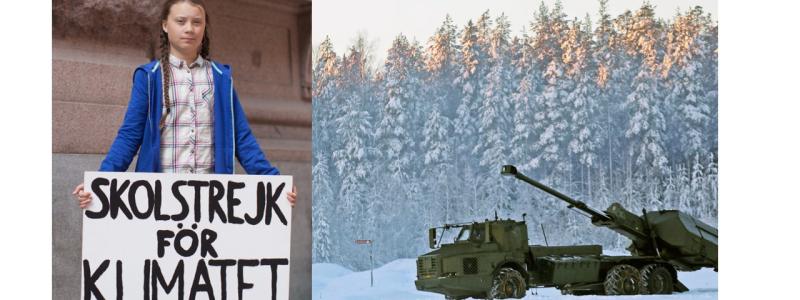Construction on one of the world’s most modern nuclear reactors is currently well underway at the Olkiluoto nuclear power plant in Finland.
Besides the safety, the efficiency of Olkiluoto 3 is also improved compared to earlier reactor designs and will be approximately 37 percent. This is thanks to a large number of small but significant technical solutions, for example more modern turbines shovels. As a result, Olkiluoto 3 will have an electrical output that is 10 percent higher than for the newest plants in operation in Europe today. The nuclear fuel is also utilized in a more effective way than in other plants. This will considerably cut the production costs for electricity.
In addition to the economical factors, the higher degree of efficiency also means that the difference between the input and output temperature of the cooling water is lowered by about three degrees Celsius compared to Olkiluoto 1 and 2. This reduces the amount of excess heat transferred to the surrounding environment. The higher fuel efficiency will also result in less radioactive waste per megawatt-hour.
Closing In
The construction of Olkiluoto 3 reached a milestone in June of this year when the reactor pressure vessel was installed in the reactor building, marking the start of the installation of nuclear components, such as the reactor coolant piping.
Meanwhile, construction of the buildings themselves is more than 90 percent complete. Currently, the inner containment is being prestressed, a process that will take a few months. Once the pre-stressing is finished, concreting work can start on the outer containment dome.
In the turbine building, the installation process is in its final stages and a temporary control room is being set up to start testing the systems. The plant operators for Olkiluoto 3 have already completed their theoretical training and one year before the opening of the plant a simulator will be up and running in order for the operators to receive their practical training.
Pushed Time Table
The project has previously suffered some delays, but for the last few years it has been picking up speed and the reactor is now expected to be operational by the end of 2012.
When asked about how the delays have affected the project, Käthe Sarparanta replied, “For the last couple of years the project has moved along nicely, but a reason for the shaky start was that a new unit had not been built in Europe for more than a decade, since the Chooz and Civaux N4-type reactors became operational in the late 1990’s, and starting up the whole nuclear industry with all of its subcontractors took longer than planned. The detailed planning also took longer than expected. But it is important to point out that even though the delay is regrettable, the safety and quality is not affected and we are sure that Olkiluoto 3 will become a reliable facility.”
Waste Disposal
Every year, TVO sets aside more than 10 million Euros for research and development, the largest portion of which goes into nuclear waste research.
An interim storage facility for spent fuel and a final repository for low- and intermediate-level operational waste are already in place at Olkiluoto. Low-level waste, such as protective clothing, tools and scrap metal, and medium-level waste, which consists mainly of filters used to clean the water circulating in the reactor, are placed in barrels, packed in concrete containers and put into silos excavated at a depth between 60 and 100 meters down in the bedrock.
The company Posiva Oy, a subsidiary of TVO and the Finnish counterpart to SKB in Sweden, is also planning to build a final storage facility for spent nuclear fuel at Olkiluoto. The underground facility, which will be available in 2020, will hold high-level waste from all the reactors at Olkiluoto, as well as from Fortum’s reactors at the Loviisa nuclear power plant.
Back to Back Projects
In 2008, TVO submitted an application for a decision-in-principle concerning the construction of a fourth nuclear reactor at Olkiluoto. The decision- in-principle was granted by the Government in February 2010 and ratified by the Parliament on July 1.
The reactor, dubbed Olkiluoto 4, will be a light water reactor with an electrical output between 1,000 and 1,800 megawatts. Because the possibility of expansion was taken into account early on in the development of the plant site, the infrastructure needed for the new unit is largely in place already, making Olkiluoto an ideally suited location. In addition, the land area has already been zoned, the water conditions are favorable for cooling of the new reactor and the connection to the national high-voltage grid will be straightforward.
At the moment, TVO are proceeding with the planning of the huge project. The exact reactor type for Olkiluoto 4 has not yet been chosen, but five alternatives are currently being considered. All of the prospective reactor types are of Generation III+, just like Olkiluoto 3. Two of the designs are boiling water reactors: ABWR Toshiba, a 1,650 megawatt reactor supplied by Japanese-Swedish Toshiba Westinghouse, and ESBWR GE Hitachi, a 1,650 megawatt American reactor supplied by GE Hitachi. The other three options are pressurized water reactors: APR1400, a 1,450 megawatt reactor supplied by the company Korea Hydro and Nuclear Power from South-Korea, APWR Mitsubishi, a 1,650 megawatt reactor supplied by the Japanese company Mitsubishi, and the French EPR reactor supplied by AREVA and used for Olkiluoto 3.
Olli-Pekka Luhta, Olkiluoto 4 Project Manager, does not wish to comment on how close they are to making a selection and only says that all the five designs have both positive features and challenges, but that they are at an equal position right now and that a selection will be made when the time is right.
After construction, the unit will enter operation sometime around 2020.
Public Support
TVO feels that the support of the local community is indispensible and the majority of the population in the area around Olkiluoto accepts the construction of Olkiluoto 4.
Public opinion in Finland in general is also in favor of nuclear power. In fact, with a recent survey showing that 48 percent of the population is positive and only 17 percent of the population is negative, the difference between positive and negative opinion has never been so large.In order to further improve the relationship with the public, TVO has also built a visitor’s center at Olkiluoto that is open to everyone.










